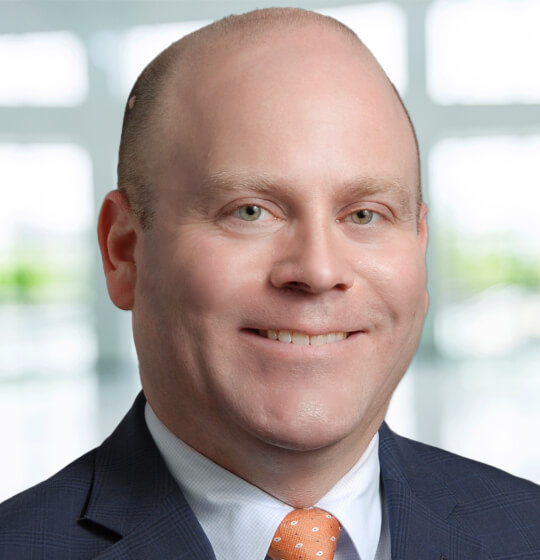Health Care Reform on Back Burner, but Hot-Button Issues Remain. Although efforts to pass Affordable Care Act (ACA) repeal-and-replace health care reform have ground to a screeching halt, there is still quite a bit of buzz surrounding health care matters. Chief among the issues is whether or not the Trump administration will authorize cost-sharing reduction (CSR) subsidies to be made to insurers in 2018, to help lower premium prices for low-income individuals. President Trump has threatened to end the subsidies, presumably as a form of leverage to force Congress to act on repeal-and-replace legislation. Health insurers are worried about the uncertainty, as they must decide upon premium rates for the coming year within the next few weeks. As a result, insurers may be forced to increase premiums and/or leave the market altogether if the uncertainty is not soon put to rest. Another burning topic is how the federal government should respond to the growing opioid crisis. Although health care advocates had hoped that any new health care legislation would include specified funding to combat the rapidly-expanding crisis, the president has in recent days stated that he is leaning towards a “law-and-order approach” to the problem. Given these issues—with others sure to follow—it seems safe to say that the shadow of health care reform is still an inconvenient but ever-present reality in Washington. (Hat tip to Stephanie A. Smithey and Timothy G. Verrall.)
Persuader Rulemaking. Comments are due today in the U.S. Department of Labor’s (DOL) proposal to rescind the 2016 persuader rule. The 2016 interpretation, which would have subjected employers’ interactions with labor lawyers and consultants to potential disclosure, was permanently enjoined by a federal court late last year. Because this issue impacts both employers and attorneys, Ogletree Deakins (together with six other law firms) filed its own comments. Additionally, 17 states’ attorneys general have filed comments with the DOL in favor of rescinding the rule.
NLRB Musical Chairs. This week, NLRB Chair Philip Miscimarra notified the White House of his intention to leave the National Labor Relations Board (NLRB) when his term expires in December, rather than seek reappointment to a second term. We’ll have more on Chair Miscimarra in future editions of the Buzz, but for now we are focusing on the impact of his eventual departure on the Board’s ability to roll back some of the NLRB’s recent policy mistakes. The earliest date that NLRB nominee William Emanuel could be confirmed by the Senate and thereby give the Board a 3–2 Republican majority is when the Senate returns from its August recess on September 5. From that date, there are 102 days (not including weekends and holidays) before Miscimarra’s term expires on December 16. If the transition from Miscimarra’s departure is not a smooth one, and his seat remains vacant, then the Board’s Republican majority will be short-lived and the NLRB will be deadlocked, 2–to–2.
SCOTUS Arbitration Case. On Wednesday, the NLRB filed its brief in the Murphy Oil case, asking the Supreme Court to invalidate arbitration agreements containing class action waivers. The case is hugely important for employers and has taken an interesting turn since the Department of Justice (DOJ) reversed its position back in June and now asks the Court to uphold such agreements. General Counsel Richard Griffin will argue the case for the Board, which is set for October 2—the very first day of the Supreme Court’s upcoming term. Those interested in reading more about the case can check out the amicus brief prepared by Ron Chapman, Jr., Christopher C. Murray, and Brian E. Hayes on behalf of multiple business groups.
Joint-Employer Lobbying. Remember how we recently reported that the introduction of the joint-employer “fix” bill in the House would reinvigorate the lobbying campaign to overturn the NLRB’s expanded joint-employer standard? Well, former NLRB Board Member Peter Schaumber fired the first salvo, with an op-ed in the Wall Street Journal (subscription required). Notice that Schaumber’s ask at the end of the article is for Congress—and not the NLRB—to fix the problem. Note that the bill is actually called the Save Local Business Act, not the Protecting Local Business Opportunity Act, which is a previous version of the bill.
Fiduciary Rule Postponed (Again). We’ve previously reported on the postponement, until January 1, 2018, of certain provisions of the DOL’s fiduciary rule. Well, on Thursday, the DOL sent to the Office of Management and Budget (OMB) a proposal to further extend the effective date of these provisions—which include the best interest contract (BIC) exemption—to July 1, 2019 (18 months). After the OMB reviews the proposal, the DOL is expected to make the proposal available for public comment.
PBGC Seeks Comments. The Pension Benefit Guaranty Corporation (PBGC) recently released its draft strategic guidance plan for fiscal years 2018-2022, which “describes the mission, long-term goals, end-results that PBGC strives to accomplish by FY 2022 and how the Corporation will monitor its progress.” This essentially allows PBGC-watchers to provide feedback on the regulatory/policy road map that the agency will follow over the next several years. Comments on the draft plan are due by Monday, August 14. Additionally, pursuant to several executive orders, including President Trump’s “2 for 1” regulatory executive order, PBGC has issued a Request for Information (RFI), which seeks input “on regulatory and deregulatory actions PBGC should take.” Comments are due on August 25.
Proposed Changes to Forms for H-1B Workers. The Buzz previously discussed the DOL’s June announcement that the agency would focus on fraud and abuse in foreign worker visa programs. Following up, late last week the DOL’s Employment and Training Administration published its proposed changes to the Labor Condition Application for Nonimmigrant Workers (LCA) pertaining to H-1B workers. The DOL states that the purpose of these changes is “to assist the regulated community with form completion; provide greater clarity of existing employer obligations under the programs; and promote greater program transparency by collecting additional information on the employment of temporary nonimmigrant workers by U.S. employers.” (Emphasis added.) Some of this additional information includes identifying the name and location of the client or secondary employer. Initial comments are due to the DOL on October 2, 2017. Once the DOL reviews these comments, it will transmit its proposed changes to the OMB, upon which the public will have another opportunity to file comments.
New H-1B Study. A new study was released this week that will provide additional authority for advocates of the H-1B visa program. The study examines the impact of the H-1B program on the U.S. and Indian economies and concludes that “workers in each country are better off because of high-skill migration.”
Hello, Goodbye, and Where Do I File This? Speaking of temporary foreign workers, check out guitar great George Harrison’s immigration paperwork filed for the multiple times he and the Beatles traveled the long and winding road to the United States for concerts, award shows, and charity events. U.S. employers looking to hire foreign workers from here, there and everywhere might take comfort in the fact that even George Harrison had to deal with perplexing immigration red tape. Ultimately, while the Beatles definitely had their complaints about paying the taxman back in England, they certainly were able to come together when it came to complying with U.S. immigration legal requirements (John and Yoko, not so much).




